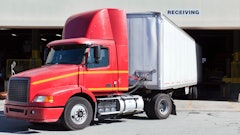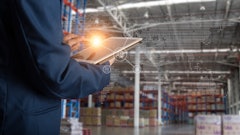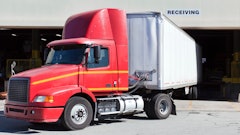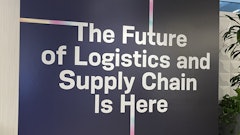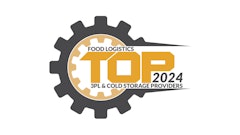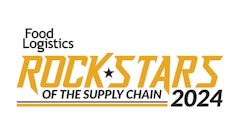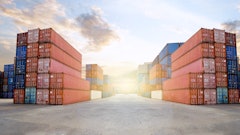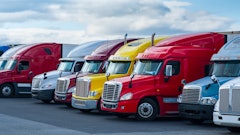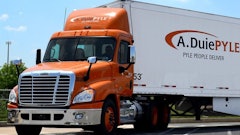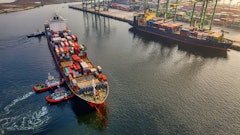
Global 3PLs such as Crowley have expertise in all areas of the international supply chain.
Food companies sourcing products from around the world are faced with a long list of critical and complex activities required in managing a global food supply chain. Managing truck, ocean, air and rail transportation components as well as numerous customs and individual country-by-country compliance regulations can soon overwhelm even the stout-hearted. Using multiple providers to handle specific links along that extensive chain can cloud visibility.
After all, successful and on-time delivery to customers is the primary objective for food companies sourcing products from around the world.
“The biggest concern is maintaining refrigerated and frozen foods at the proper temperature throughout the global supply chain,” notes Dick Armstrong, chairman, Armstrong & Associates Inc. in Stoughton, WI. “Spoilage concerns are the No. 1 complication if you don’t have refrigerated and insulated equipment in the right place at the right time.”
Managing the seamless and timely integration of multi-modal transportation from origin to final destination could involve trucking, ocean, rail or air transit to meet customers’ speed-to-market and expedited requirements. Sounds like a tall order, but 3PLs help eliminate the angst. Using one 3PL provider to manage every task along that global chain can provide consistent service, which increases the 3PL’s value to its clients. So how are U.S. food companies managing these complexities that allow them to control and manage their global supply chains while maintaining stellar customer service?
Managing A Complicated Supply Chain
The experts we spoke with reported that managing the chain is extremely difficult for any individual company to handle on its own. “There are so many pieces involved,” notes Bob Weist, vice president for logistics and sales for Crowley Logistics Inc. of Jacksonville, FL. “First they have to get their products to the States. Then they have to factor in speed-to-market requirements, and the new Customs and USDA regulations governing imported food products.”
International food accounts for about 25 percent of the company’s business, and the segment continues to grow, reports Weist. The majority of food products Crowley handles includes fresh fruits and vegetables from the Dominican Republic and Central and South America. The company also handles finished goods such as boxed and canned goods, rice and beans.
Using multiple freight forwarders and other providers along the global supply chain hinders end-to-end communication, adds Steve Simonson, partner with Tompkins Associates in Raleigh, NC.
“You want to maintain a unified link, without having several different providers touching the product because that just invites the potential for too many holes to develop in the chain,” Simonson says. “This is a major driving factor for food companies. They prefer having one unified company managing everything, especially when you factor in food safety and security issues.”
Visibility, of course, is the means to this end. “Uncertainty within the supply chain is the No. 1 cost escalator,” notes Jim Butts, senior vice president for C.H. Robinson Worldwide Inc. in Eden Prairie, MN. “For years, companies have been depending on 3PLs for technology support offering visibility into their supply chains. They want to know where their products are, if products will get to their customers on time, and if all of the compliances are being met. So visibility through technology reduces any chance of uncertainty.”
Complying to the rules and regulations relative to a range of countries—each with its own set of rules—is the biggest headache for food companies, continues Simonson. “This is where the value of having a 3PL comes into play, as they can take care of all of those details. Language barriers can also undermine efficiencies. By hiring locals, 3PLs can have folks with boots on the grounds who know the language and the business. For example, trying to handle these activities as an individual company could mean that you can be working with a distributor in China one day, only to discover that the following day the distributor has closed down business.”
In today’s uncertain global economy, having multiple providers can pose a serious risk to the integrity of the food supply chain. “The more providers a company has operating their global supply chain, the more chance there is that one of those providers will face financial difficulties,” says Butts. “Having one 3PL provider can streamline communication, which makes the global supply chain a lot easier to manage.”
3PLs: A Value Proposition
Using a 3PL is an obvious choice for companies starting to go global because an international 3PL already has a foothold in particular countries and understands the national laws and regulations, notes Simonson. “Trying to do this on your own is very risky and companies could make a lot of costly mistakes. Working with a 3PL means you won’t have to invest a lot of capital in something you are not sure will work. Let’s face it—it’s not cheap to keep a global supply chain running optimally.”
What about savings using a 3PL? “I don’t know that there is a savings,” acknowledges Simonson. “The big win using 3PLs is that they control the supply chain through origin to destination, providing more certainty. This is what they are selling. It’s all about the certainty and security they provide as an end-to-end provider.”
Controlling all of the handoff points involved in a global supply chain could be a major challenge to individual companies, but this capability is in the DNA of 3PLs, who do this every day. “We are particularly good at integrating all of the required multi-modal services,” says Butts. “One of our core competencies is inland distribution in North America, Europe and Asia.”
C.H. Robinson has about 47,000 contract carrier relationships in all modes of transportation. Butts notes that this extensive portfolio of service providers is necessary for C.H. Robinson to be able to bring cost-effective solutions to its clients consistently. “It’s that dynamic balance between service and price that we continually monitor for our clients,” he says. “Because if you ship something by air into New York City and then wind up getting an ineffective method of shipping the products inland, you will sub-optimize your transportation spend. So we have the ability to select just the right combination of carriers that allows our customers to fine-tune their supply chains cost-effectively.”
Having a 3PL manage the global chain can allow companies to reduce the staff necessary in some critical areas. For instance, Butts points to routine, mundane, and non-value-added aspects of logistics and the supply chain that a 3PL can handle more cost-effectively.
“We can execute according to scale and we can offer a more effective way to handle these repetitive tasks using a variable cost model,” he says. “We are also a resource for knowledge and expertise relative to the industry that would be very expensive for an individual company to maintain. For instance, the changing dynamic of expertise in detailed subject matter would require a full staff or the need to hire a consultant. Companies can get these expensive functions off their cost model and onto ours so these costs become variable costs for them.”
Specialized services can also help food companies streamline their supply chains. For instance, Crowley offers services including warehousing, pick-and-pack, and distribution capabilities.
“Once the goods arrive in the U.S., we can store various products in our warehouses,” Weist says. “A customer might have several containers of one type of product and several other containers of another product. We pick and pack according to their requirements and arrange for deliveries to their individual stores. This offers customers a speed-to-market initiative that gets their products where they need to be when they need to be there. As a 3PL we can help customers decrease their lead times and their inventories by warehousing their products so they can keep their costs down.”
Smaller companies could benefit by using a 3PL, continues Weist. “They usually do not have the assets or the expertise to handle the extensive required functions. It is expensive for them to have the staff required with expertise in domestic and overseas customs, USDA requirements, and how to work with multi-modal transportation providers.”
Armstrong adds that 3PLs can be more effective at procuring and placing refrigerated containers at foreign ports precisely when the equipment is needed so the quality of perishable products is not compromised.
Doing It All
Crowley can provide clients with options allowing them to maintain costs while meeting differing delivery requirements, reports Weist. “We have expertise in all areas of the supply chain so we can suggest options that include air cargo, expedited cargo, and speed-to-market deliveries, for example.”
Following a shipment from beginning to end demonstrates the extensive range of a 3PL like Crowley. For instance, as fresh fruit or produce is ready for shipment out of Central or South America, Crowley can provide trucking and delivery to ports in those regions. “We can handle the forwarding requirements such as the new 10 + 2 Customs regulations for import entries,” explains Weist. “Then we can book the steamship line and negotiate competitive rates for our customers. When we receive the shipment at US ports, we can assist in USDA requirements and customs clearance.”
Once products are in the U.S., the biggest concern is speed to market, continues Weist. “Many of the products we receive are in the process of maturing and they are more valuable to our customers if they can get to market in the shortest period of time. This means the quicker we can bring those products off our vessels and guide them through inspections set up in our terminals, the better value we can provide to our customers. So it’s this kind of immediate expert handling and delivery of the products that makes the difference over someone without the knowledge or expertise who might take a day longer to complete all of these activities. This might mean the customer would net about two cents a pound less for a particular product.”
Once products arrive at a U.S. port, Crowley’s forwarding group arranges USDA inspection and any other necessary inspections. The group arranges the entry filing with U.S. Customs and then it hands off the products to trucking companies who stand ready to roll as soon as products are released from USDA. “Timing is very critical,” notes Weist. “Reefers deliver to the customer or to a customer’s DC, while some deliveries are made directly to market.”
An Emerging Model
Some experts noted that management of the entire origin-to-destination food supply chain by 3PLs is a new and emerging model. “Some of the bigger 3PLs are buying companies that enable them to have this global footprint allowing them to provide services required throughout the supply chain,” reports Simonson at Tompkins.
He adds that 3PLs are taking advantage of economies of scale in foreign markets. For instance, foreign producers and growers might be selling to a number of different clients in particular countries. Third-party logistics providers can consolidate all of these loads and bring them into one port—as opposed to handling separate small shipments. “So using this global 3PL model can save everyone money and the savings the 3PLs tout are derived from these kinds of consolidations.”
For example, Jacobson Cos. in Des Moines, IA, has been providing national 3PL services for the last 40 years. But just last year, the company hired Brian Lutt, president and CEO, to transform the company into a provider of global supply chain and logistics services. Lutt’s 26 years of experience in the global sphere is what Jacobson is counting on for that transformation to happen by June of this year. “Jacobson’s plan in hiring me was to help the company create an international business platform,” says Lutt.
In early April of 2010, Jacobson acquired a U.S.-based international logistics company specializing in forwarding, customs brokerage, and freight management services. The company also operates domestic transportation and warehousing.
“This acquisition also has airfreight and ocean freight capabilities, so it brings to the Jacobson portfolio additional capabilities of supply chain and logistics services that will allow us to control and manage the global supply chain,” reports Lutt. “They have an advanced IT system that provides the visibility requirements our customers request internationally.”
The new international logistics services unit will handle other verticals in addition to food and beverages.
Jacobson has several food clients already onboard awaiting the new international offering. “The key to the global food supply chain is maintaining the integrity of the product as it moves from its origin to final destination,” says Lutt. “If you have many handoffs along the supply chain, but you don’t have control of those connecting points—or you don’t have the visibility into the processes involved in each of those handoffs—then you have a problem. With individual links of the chain being handled by different parties, there could be a breach in terms of the security or integrity of the product when the handoffs take place.”
The initial point of visibility for Jacobson’s new model begins at the creation of a P.O. for a transaction, explains Lutt. Once the company takes receipt of the food product, it is transported to a warehouse where value-added packaging could be done—or it could be moved right into a consolidation mode. The shipment is then loaded into a container for ocean transit—or put onto an optimized pallet for air transit.
Once shipments hit U.S. ports, Jacobson handles customs brokerage and FDA or other required inspections at its port facility. “We can take products into our facility at the ports for further consolidations which could mean pooling products with other domestic products and then moving them to final destination whether that is a retailer’s warehouse or directly to the retailer,” Lutt explains.
Jacobson operates port facilities in Seattle, Los Angeles, Miami and New York, where it can provide de-consolidations, value-added services, packaging, and re-packaging. It also operates hubs at air facilities in Denver, Chicago and Columbus, and operates over-the-road border facilities in El Paso and Houston.
Jacobson expects its global reach will extend into Asia, Europe, Africa, and Latin America over the next few years. “This is a methodical, step-by-step process and not a launch that you can bring out all at once,” notes Lutt. “A first major step for us will be to roll this model out to Asia and then we will go beyond that selectively over the next few years so we will have a broad-scoped international service capability.”
Simonson notes that the number of 3PLs getting involved in providing end-to-end global food supply services will increase over the next few years. He reminds that the food supply chain is an expensive venture because of the strict refrigeration and freezing requirements.
“They are expensive distribution chains and the industry will become even more complex as the government imposes new rules and regulations. So as that complexity increases, food companies will want someone to manage that effectively. One of the most active private equity areas now is the 3PL providers,” says Simonson. “That activity was hot in 2006 and 2007, prior to the recession, and from what we are seeing now it is not slowing down.”
Here are just a few situations where your provider’s size and scope could affect your supply chain success—and where it may make sense to go with a global 3PL.
When benchmarking isn’t an option: Overseas logistics is still relatively new territory for some companies. As a result, its success frequently requires the use of engineering practices such as optimization and simulation.
Not only are large global 3PL more likely to have the sophisticated hardware and software needed to pull these practices off, they’re also more likely to have the caliber of in-house engineering personnel required to run these systems and calculations correctly.
Plus large global 3PLs are going to be able to provide your company with a more reliable landed cost calculation for most international venues you’re considering, because they already have a thorough grasp of the real-life challenges and costs that go hand-in-hand with doing business there.
When you want to be extra-sure you’re complying with the latest international regulations or taking advantage of the most advantageous certifications: Whether it’s 10 + 2 or the Prior Notice Of Imported Food Final Rule, there’s an excellent chance that large global 3PLs will not only be current with the latest import/export security regulations, they’ll usually be the first to comply, because hundreds of their clients routinely depend on them to master and handle regulations like these on their behalf.
Global 3PLs also tend to be some of the earliest adopters of security certifications such as C-TPAT, which can help speed up a company’s product flow through Customs.
When you’d like to address a challenge from a variety of angles: There are many ways to defray the cost and improve the efficiency of doing business internationally.
Larger global 3PLs can usually give you solid firsthand advice about the pros and cons of each option you’re considering because they’ve been practicing these techniques throughout the world. Just as important, their advice will be objective, because global 3PLs with myriad locations and service offerings don’t have a vested interest in trying to sell you one specific technique or location over another.
When you could use better negotiating power: Large global 3PLs tend to purchase higher quantities of individual logistics services than their smaller counterparts, because they subcontract transportation and other services for hundreds of clients. As a result, they can often qualify for better discounts and other advantages like better equipment availability guarantees on your behalf.
When connectivity counts: Many international plants and distribution centers still aren’t as systems-intensive as their U.S counterparts, and that can make it difficult to monitor inventory, eliminate waste or pilferage, and comply with customer requirements such as UCC 128.
Larger global 3PLs typically offer a variety of technological solutions that can help. They’re experienced at implementing WMS start-ups in low-tech locations. And they’re adept at helping companies find a way to meet systems-related mandates even if the factories or suppliers their companies are shipping from don’t have computers, printers or EDI connectivity.
In addition, large global 3PLS have usually invested millions of dollars in end-to-end shipping visibility tools, which can help companies make more current inventory deployment decisions while goods are en route.
When you could use swifter disruption support: Consider this scenario—your company booked space on a container ship sailing out of Shanghai. But unfortunately the truck carrying your shipment broke down and you missed the sailing.
That’s just one of the unforeseen international shipping glitches a global 3PL can adeptly help you deal with. Many offer “Plan Bs” like international air-sea transportation combinations that can be implemented almost as soon as you know disruptions will occur. Additionally most have easy access to—and established relationships with—everything from expedited transportation providers and overflow facilities to U.S. deconsolidation centers, all of which can be employed to minimize the impact of international shipping delays.
When you need a presence in a particular market yesterday: Using 3PLs’ existing facilities has always been an easy way to establish a near-immediate logistics presence in any market. However it’s especially handy in international markets, where figuring out who the key players are and navigating the complex cultural and legal requirements is a complicated endeavor that can take months or years.
Chances are good that most large global 3PLs have been operating in your international venues of choice for years. Among other things, they’ve probably already secured space in the best available distribution centers (or built one themselves), hired some of the best local managerial talent and jumped through every legal and cultural hoop your company has just begun to think about.
As a result, your supply chain in that country can be up-and-running —and running correctly—far faster.
—By Tony Zasimovich, APL Logistics, Scottsdale, AZ
Five Steps To Choosing A Global 3PL
In your search for just the right third-party logistics provider to control and manage your global food supply chain, these are a few top considerations to keep in mind.
1. Experience: “The first thing you should ask is does the 3PL have the experience handling the types of products you will be dealing with in your global food supply chain,” says Dick Armstrong, chairman, Armstrong & Associates Inc. of Stoughton, WI. “If I am importing frozen shrimp from the Far East, I want to know how much the potential 3PL is already involved in handling this product.”
2. Financial strength: It is critical to assure that the potential 3PL will be around for the long term and that it will be providing a solution you can rely on for future business, says Jim Butts, senior vice president of C.H. Robinson Worldwide Inc. in Eden Prairie, MN. “Financial strength also means that the company has the ability to invest in the latest technology, which is critical in providing the necessary global visibility.”
In today’s shaky global economy, customers are looking for longevity and durability in the business partners they choose to work with, adds Kip Douglas, director of transportation and logistics for Jacksonville, FL-based Crowley Logistics Inc. “There have been near-record-breaking numbers of trucking companies and even 3PLs that have gone under in the last few years. So food companies should make sure a potential 3PL is a stable company by asking to see their financials. I think Crowley’s 115-year history speaks well to our longevity.”
3. Global presence: You have to understand in which countries your potential 3PL is operating, advises Steve Simonson, partner, Tompkins Associates in Raleigh, NC. “Find out how much coverage they can provide in terms of transportation and logistics across the world and in places where they can’t provide coverage, what will they do for you to make sure you have the coverage you require.”
“There is no substitute for global presence in effectively managing a global supply chain,” Butts says. “The 3PL should be able to prove it has the expertise required to get things done when they need to get done. I am talking about not just competent problem solvers, but seasoned experts who can prevent problems from occurring in the first place.”
4.Account management strategy: Butts notes that C.H. Robinson’s account managers are empowered to make the decisions they need to make on behalf of customers. Of course, these decisions will be in line with customer expectations and objectives. “Our account managers have a good understanding of the customers and the idustries they represent,” he says. “They have a thorough understanding of the complexity of the global supply chain because they work closely with multiple customers and multiple carriers so they are virtual extensions of the customer. One of the signs of a company without the required global expertise is when that company hires a consultant to tell them what needs to be done.”
5.Building partnerships: The relationship between a food company and its 3PL is all about building a partnership, says Bob Weist, vice president of logistics sales for Crowley Logistics.
“Our job is to team with our customers so we understand what their supply chains look like and where we can provide value to them,” explains Weist. “We ask our customers what their lead time is on particular products and what modes of transportation they are considering. Once we have had extensive discussions with potential customers, we build several model options to offer them.” —A.T.





